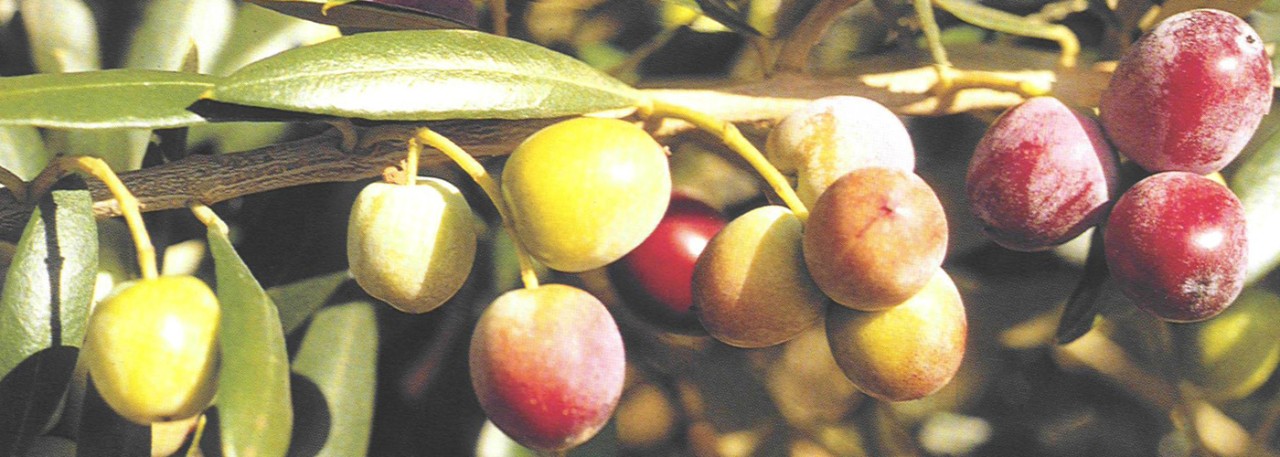.png.transform/rendition-xs/image_image%20(1).png)
Antequera PDO
Extra virgin olive oil obtained from the fruit of olive trees (Olea europea, L.) of the following varieties: Hojiblanca (main variety), Picual/Marteño, Arbequina, Lechín de Sevilla/Zorzaleño, Gordal de Archidona, Picudo, Verdial de Vélez-Málaga and Verdial de Huévar.
Tasting notes
These oils present a range of fruity aromas of green olives, other ripe fruits, almonds, bananas and green grass. They are light in the mouth, with faint to medium hints of bitterness and piquancy in perfect harmony with other, slightly sweet, flavors. The color varies from golden yellow to greenish yellow, depending on the timing of the harvest and geographical location within the region.
Other notes
These oils are moderately stable, and rich in vitamin E due to a high concentration of tocopherols (typical of the Hojiblanca variety), with nicely balanced fatty acid content making them nutritionally beneficial. They contain high levels of oleic acid, medium levels of linoleic acid and a high ratio of unsaturated to saturated fatty acids.
Analytical data:
- Average fruitiness: >= 4
- Acidity (%): 0.3º
- Peroxide value (meq oxygen per kg of oil): 10
- K270 (absorbance 270 nm): 0.15
Production / Processing method
For the most part, the olive groves are unirrigated, the trees being laid out in rows to form a square grid. The dimensions of each square are generally between 8 x 8 m (26.24 x 26.24 ft) and 12 x 12 m (39.37 x 39.37 ft). Each square contains from one to four trees, most usually three. The cultivation methods applied are those traditional to the area and are, for the most part, environmentally friendly.
Only ripe, healthy fruits are harvested, the olives being gathered directly from the tree by traditional methods (such as shaking the tree with sticks so that the olives drop off), mechanical vibration, or a mixture of the two. The olives are always transported to the mills in bulk, carried in trailers or rigid containers. They are ground, in registered mills, within a maximum of 48 hours after harvest. This is done by the continuous method, using hammer mills made of inert material authorized for use in the food industry. During malaxation (mixing) of the paste, the temperature is monitored to ensure that it never exceeds 36º C (96.8º F). The only authorized additive is properly certified food grade talc, at a maximum dose of 2.5%.
The separation of the paste into its liquid and solid phases is done, essentially, by centrifugation. Only oils obtained from the first centrifugation of the paste are certified. The temperature of the water added to both horizontal and vertical centrifuges must not exceed 35º C (95º F). The complete process of decanting the oil lasts at least six hours when centrifugation is used, and about 36 if done by gravity.
The extra virgin olive oil obtained during these processes is then stored in a clean environment, in stainless steel tanks, steel tanks with food-industry approved cladding, or in trujales (traditional underground vats) situated in well sealed warehouses. The tanks must be completely closed and equipped with proper cleaning access, drainage systems and sample-extraction devices. Warehouses must be climate controlled to maintain the right temperature for olive oil storage.
Protected status oils may only be transported in bulk within the production area’s specified geographical limits: this is to ensure traceability and guarantee of origin. The oil is bottled and canned in registered plants within the production area, using glass, coated metal or food-industry approved ceramic vessels.
Geography / Relief and climate
The natural region of Antequera possesses specific geographical, morphological, and climatic characteristics: it lies within a declivity with gentle topography and altitudes of 400-600 m (1,312-1,968 ft). It is surrounded by a series of mountain systems to both north (Subbaetic Sierras) and south (Baetic Mountains) that endow it with a microclimate and soil conditions suitable for cultivating olive trees.
The trees are grown at altitudes ranging from 450 to 600 m (1,476 – 1,968 ft), on medium depth, very chalky soils (20-70% carbonates). The Hojiblanca variety is well adapted to this type of soil, the trees extracting considerable quantities of calcium from the ground. Because of the water- retentive nature of the Antequera Basin, there are a number of river terraces that exhibit large quantities of Tertiary deposits, among them red Mio-Pliocene clays that provide the olive trees with plenty of potassium and also retain a lot of moisture, propitiating vegetation in an area where over 90% of the area planted with olives is unirrigated.
The region's climate is warm-to-hot Mediterranean, given Continental tendencies by its location within Andalusia’s Baetic mountains. This situation produces major temperature differences between summer and winter, and between night and day. Low temperatures during the winter months delay the olive's ripening phase, especially in the Hojiblanca variety: this effects a change in the oils’ acidic profile, raising oleic acid levels at the expense of saturated and unsaturated fatty acids.
Regulatory Council
Consejo Regulador de la DOP Antequera
Carretera de Córdoba s/n
Apartado de Correos, nº 88
29200 Antequera (Málaga)
Tel: (+34) 952 84 14 51
info@doantequera.org
www.doantequera.org
Sources:
- Spanish Ministry of Agriculture
These oils are moderately stable, and rich in vitamin E due to a high concentration of tocopherols.


- Antequera 1
- Antequera 2

Antequera (Andalusia)
